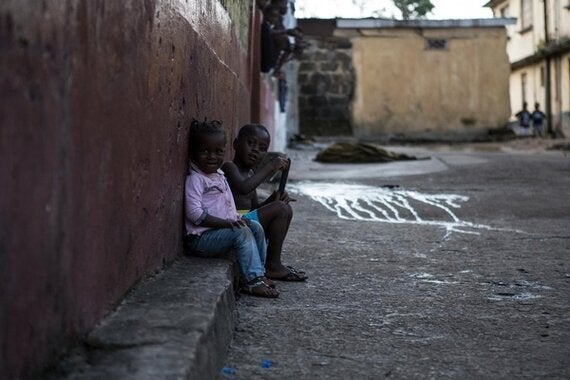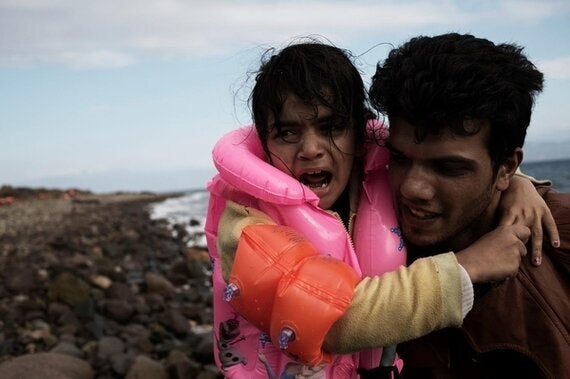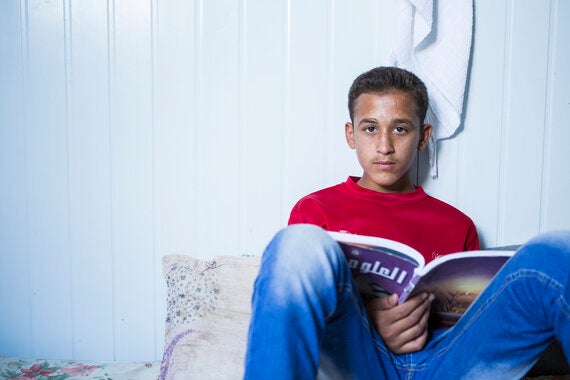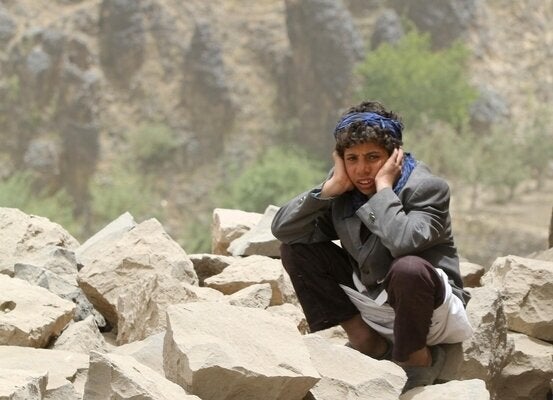
A young Iraqi girl who has been displaced from her home ©Unicef
At the beginning of this year I remember being shocked and saddened by the fact that 2014 had been the most dangerous year for children to date. I had hoped that the situation for children across the world could only get better.
Throughout this year, however, we have been inundated with worsening reports and statistics from Unicef's offices across the world and 2015 has become a year of an unprecedented number of emergencies facing children.

Children who were separated from their families during the Ebola outbreak ©Unicef
An earthquake in Nepal, the Ebola epidemic in West Africa and conflicts raging on three continents, amongst many more smaller scale crises, have put children in terrible danger.
Protracted and violent crises in Syria, South Sudan, Iraq and Yemen have trapped children in emergencies of the severest and largest scale.
One in ten of the world's children now live in conflict-affected areas - an estimated 230 million children. As the refugee and migrant crisis has developed, the number of children seeking asylum in Europe this year is now near double that over the same period in 2014.

A young Syrian refugee arrives on the shores of Europe ©Unicef/Gilbertson
All of this is highlighted in a briefing launched today by Unicef UK which makes it extremely clear that in all crises - whether conflicts or disaster, sudden or protracted - it is children who are the hardest hit.
Emergencies not only create new threats to children's safety and wellbeing, they exacerbate the existing dangers of violence, exploitation and abuse.
Children in conflict are victims of violence and witnesses to violence. Displaced from their homes, separated from their families, many are recruited into armed groups, trafficked, illegally adopted, sexually exploited or forced to work. Children also bear the brunt of attacks and have become more vulnerable to new tactics and the increasing complexity of warfare. Between 2013 and 2014, the number of child causalities resulting from explosive weapons increased by a third.
Unicef hears stories from children who have witnessed or directly experienced unspeakable violence every day.
Bassam, 14, a Syrian refugee, is just one of these children. Recalling life in Syria, he explains: "Life was good, but then suddenly it got dangerous. There was bombing and we would hide in the basement. Dad would lock us in there for safety. This wouldn't always protect us though; my cousins almost died in an explosion. I was most scared for my little brother; I used to carry him to the bomb shelter all the time.
"When the bombs went off, everyone was scared. We couldn't sleep at night; if we did we would have nightmares."

Bassam, pictured in his home in Zaatari refugee camp ©Unicef
At just 14 years old, Bassam has witnessed extreme violence; his mother's death, his cousin's hand being blown off and being shot at while his family fled to Jordan. The trauma of war has left its mark. And while Unicef works to provide schools and safe areas for play and recreation to children like Bassam, there is much more we can do to help children caught up in these situations.
Our briefing calls for the protection of children from violence in emergencies to be prioritised - both in the global humanitarian response, and long-term efforts to build resilience to emergencies . In all crises, the failure to protect children from violence, exploitation, abuse and neglect is life threatening at worst and life-altering at least. Protection of children must be considered an immediate priority alongside food, emergency shelter and clean water.
It is now largely accepted that exposure to violence can threaten the development of children's brains and lay the foundation for cycles of intergenerational violence. We must stop this happening and you can do something about it.

A boy sits amid the rubble in Yemen ©Unicef/Hamoud
At the World Humanitarian Summit in May 2016, the world will come together for the first time to forge a new commitment to humanitarian action. At Unicef UK, we want the protection of children from violence in emergencies to be high on the agenda. In order for a new humanitarian commitment to transform the lives of future generations, children must be at its heart.
The World Humanitarian Summit is a chance for us to make sure that protecting children from extreme violence, protecting the schools that keep them safe and protecting children who are torn from their families by wars and disasters is prioritised by the UK and other governments.
In an increasingly dangerous world, protecting children from violence in emergencies is life-saving and must be prioritised - we all have a responsibility to make sure this happens.
Please sign Unicef UK's petition telling David Cameron to protect children in emergencies.
